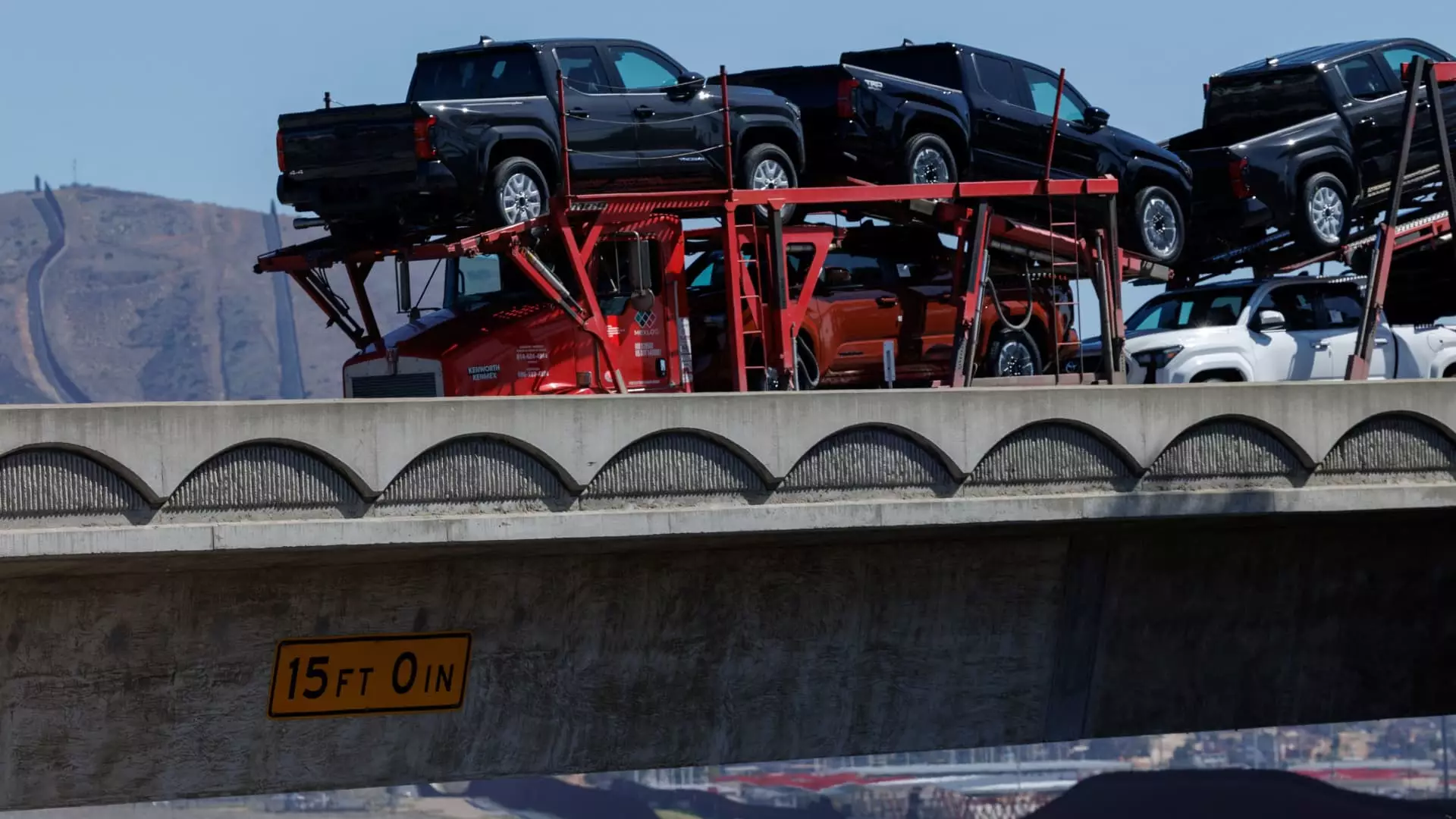The recent announcement by former President Donald Trump to impose a sweeping 25% tariff on all cars not manufactured in the United States raises significant concerns and questions about the future landscape of the automotive industry. As these tariffs are set to take effect, fundamental shifts will transpire not only among the “Detroit Three” automakers—General Motors, Ford, and Stellantis—but also ripple across the wider market. The intended consequences of these tariffs appear benevolent—protecting American jobs and techniques—but the reality unfolds a more nuanced discourse that raises eyebrows and heart rates.
It’s critical to understand that tariffs, while ostensibly designed to safeguard domestic industries, can often backfire in more extensive economic structures. The automotive industry, notorious for its complex supply chains, thrives on the interchange of parts that cross borders indefinitely before the final assembly is complete. Each vehicle comprises tens of thousands of components sourced globally. This intricate network means that slapping on tariffs indiscriminately threatens to disrupt what is essentially an interconnected tapestry woven from international relations, trade agreements, and cooperative dynamics.
The Political Echoes and Economic Resonance
The declaration elicited mixed emotions among different interest groups. For the United Auto Workers (UAW), it was a cause for celebration. UAW President Shawn Fain praised the decision as a “major step in the right direction.” It’s alluring for labor unions to embrace measures that they believe will safeguard union jobs; the prospect of revitalized American manufacturing is a sentiment that resonates deeply with the middle class. However, the jubilance of the labor unions fails to acknowledge the far-reaching consequences these tariffs may have on consumers and the automotive landscape at large.
Economists and industry analysts have raised crimson flags, cautioning that these measures might backfire. For instance, Goldman Sachs estimates that the tariffs could inflate the cost of imported vehicles by $5,000 to $15,000. More alarmingly, a considerable portion of parts required for U.S. assembly comes from international sources—if foreign components became unfairly taxed, we could witness escalated prices for American-made vehicles by an estimated $3,000 to $8,000. The final consumer, often seen as the priority, might find themselves facing the ramifications of protective tariffs in the form of inflated vehicle prices.
The Market Reaction: A Guide to Investor Sentiment
Following Trump’s announcement, we observed less-than-encouraging reactions within the stock markets. The significant drops in General Motors’ share prices—over 7%—and notable declines for Ford and Stellantis raise questions about investor confidence. Unlike the giants, Tesla’s share prices remained relatively steady, leading to speculation that its U.S. assembly facilities provide it a buffer against the financial fallout that could ensue from these tariffs. Observations from Deutsche Bank analysts suggest that Tesla and Ford might be shielded partially, given their assembly locations, although Ford isn’t completely insulated due to exposure to imported engines.
The rollercoaster of stock prices showcases a broader anxiety about the future of the automotive sector, potentially swaying investment trends in a market already mired in uncertainty. The complexities of tariffs raise critical questions regarding innovation and responsiveness to consumer preferences, further complicating the burden on companies that are meant to navigate the treacherous waters of both trade and market demands.
Long-Term Implications: Caution Against Overzealous Protectionism
When considering the long-term implications of such tariffs, one must tread with caution. The reality is that protectionist policies like these can spiral into retaliatory actions from other nations, decidedly undermining the very intention of fostering American manufacturing. It paints a contrasting picture against the backdrop of globalism that our economy has adopted over the last few decades. While stoking nationalistic fervor can yield short-term victories, it’s essential to engage critically with the larger economic narrative.
The volatility of auto tariffs points toward a reckoning; it will require stakeholders in all sectors to collaborate toward a sustainable solution. Tariffs might shield a certain segment of the workforce, but at what cost? The current administration’s vision illustrates a critical juncture fraught with challenges and potential pitfalls. The adage holds: one must tread carefully when attempting to protect oneself from the storm, for in doing so, one could inadvertently become the architect of their own demise.


Leave a Reply